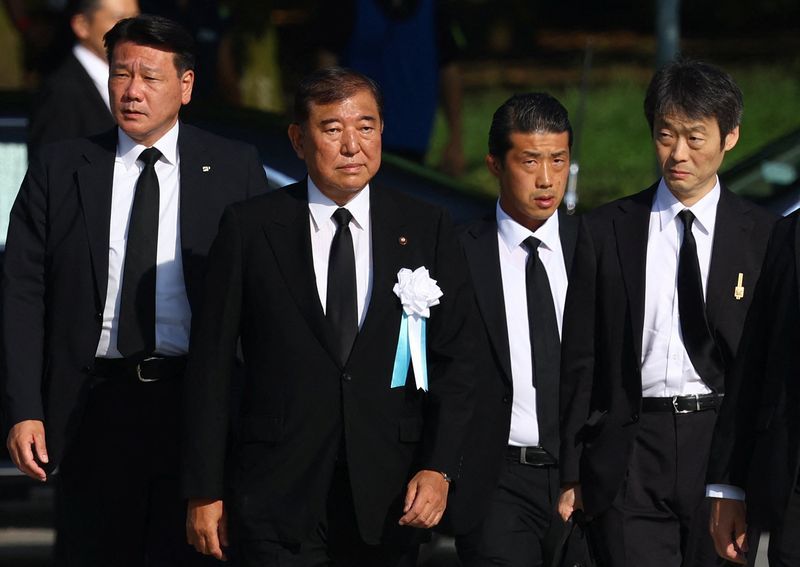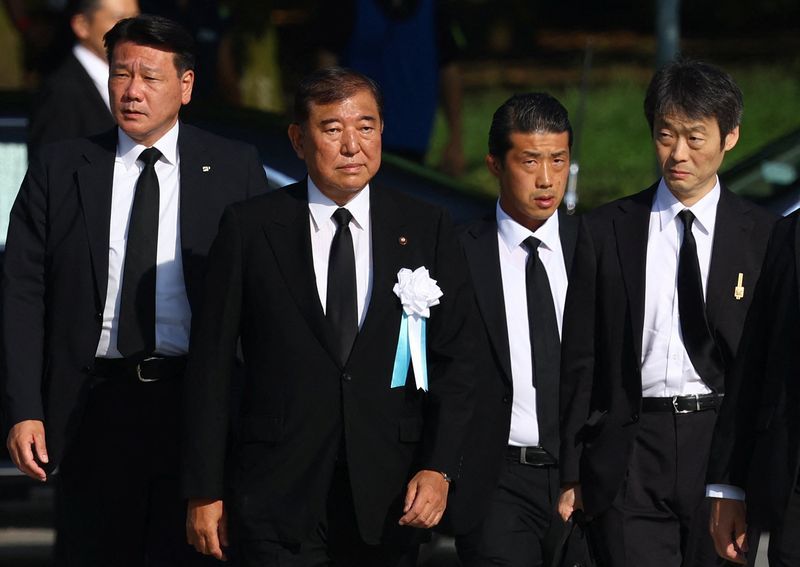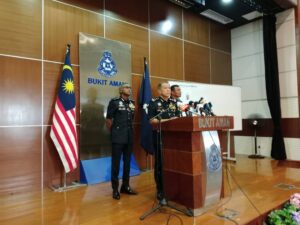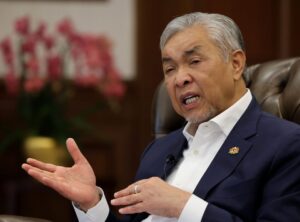
(Reuters) -Wednesday marks the 80th anniversary of the dropping of the first atomic bomb.
Following are some facts about the bombing of the Japanese city of Hiroshima and a second attack on Nagasaki three days later — the only times nuclear weapons have been used in war. Japan surrendered on Aug. 15, 1945, ending its role in World War Two.
HIROSHIMA:
* At 8.15 a.m. on Aug. 6, 1945, an American B-29 Superfortress bomber called Enola Gay dropped a 10,000-pound uranium 235 bomb, instantly killing about 78,000 people. By the end of that year, the number of dead reached about 140,000.
* The bomb, nicknamed “Little Boy,” exploded about 580 metres (1,900 feet) above the centre of the city, setting off a surge of heat reaching 4,000 degrees Celsius (7,200 Fahrenheit) across a radius of about 4.5 km (2.8 miles). More than half of the city’s buildings lay in ruins.
NAGASAKI:
* At 11.02 a.m. on Aug. 9, the United States dropped a 10,000-pound plutonium 239 bomb, nicknamed “Fat Man”.
* It exploded about 500 metres above the ground, instantly killing about 27,000 of the city’s estimated population of around 200,000. By the end of 1945, the number of dead due to acute radiation exposure reached about 70,000.
TOTAL KILLED:
* Japan has so far recognised the total number of deaths from the bombings, including from radiation illness and injuries, as 344,306 in Hiroshima (as of Aug. 6, 2024) and 198,785 in Nagasaki (as of Aug. 9, 2024).
(Editor Neil Fullick)






